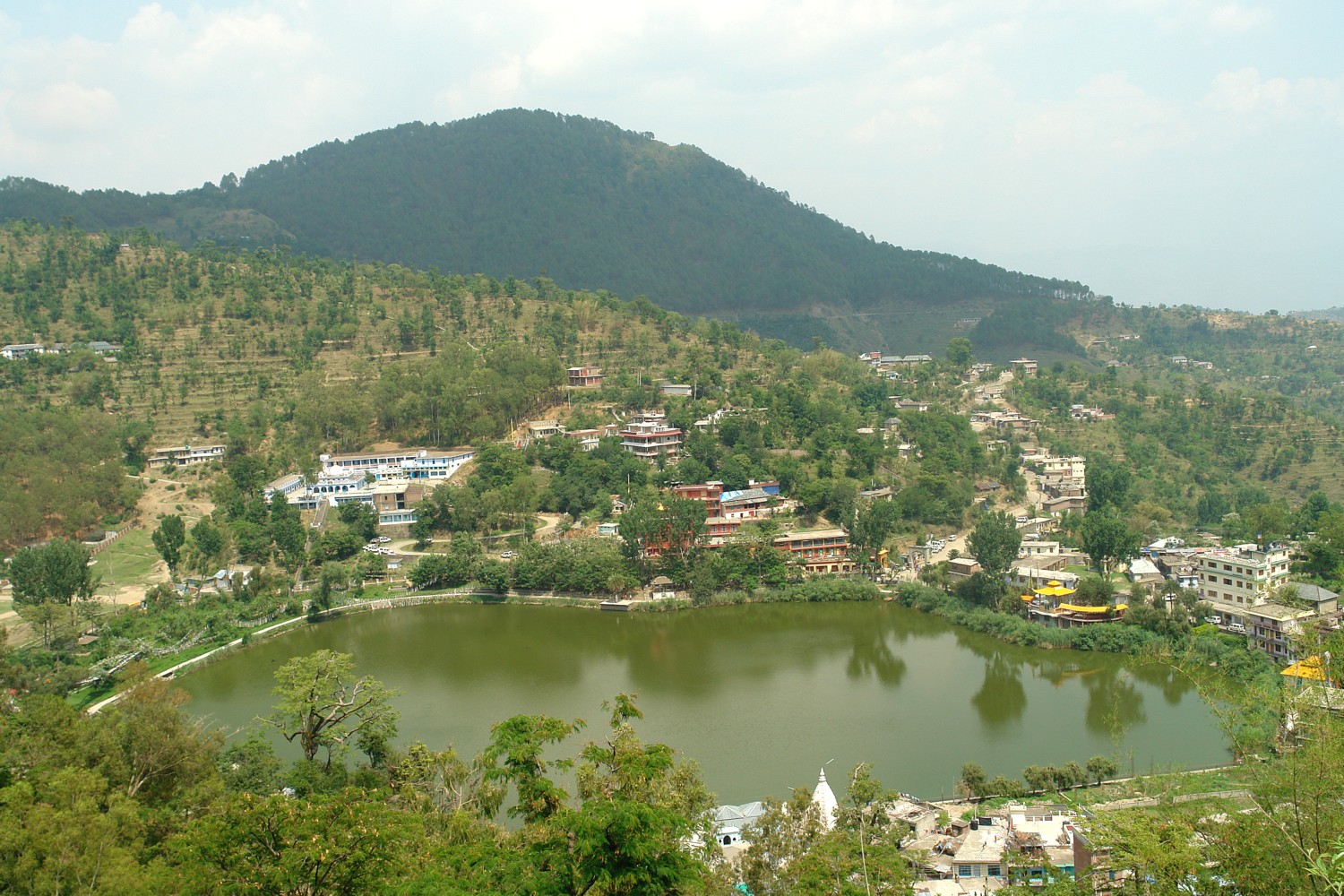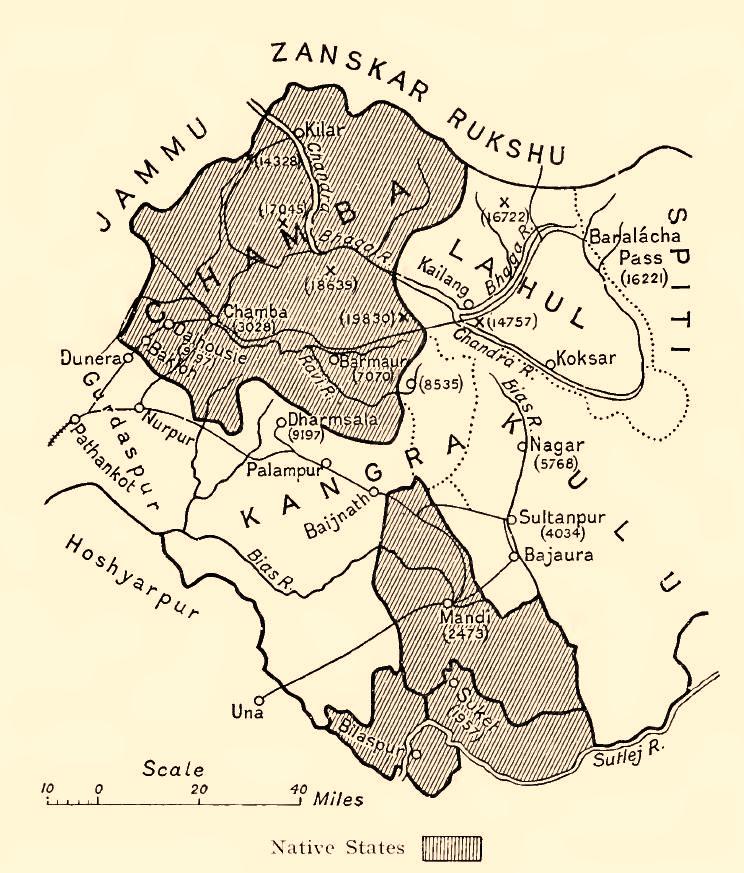|
Jaidevi
Jaidevi is a small village in Mandi District in Himachal Pradesh. It is situated 13 km off the National Highway that connects Chandigarh and Manali, Himachal Pradesh, Manali, NH-21. It is also en route to Karsog which is a small but important town of Mandi District. The name of the village derives from the temple of Kamaksha temple. Kamkasha mata is also kul devi of King Of Suket The ancient temple is highly revered and visited by thousands of devotees. It is also the family deity of the erstwhile raja (ruler) of Hill States, Suket state which was merged in the state of Himachal Pradesh in April 1948. The village is situated at an elevation of about 1200m above the sea level and is surrounded by thick pine forest which really makes its ambiences scenic and worth of visiting. The view of Kamrunag and Shikari mountains is breath taking from here. There is a government senior secondary school Jaidevi , Post office Jaidevi, Post office, an ayurvedic dispensary, dispensary J ... [...More Info...] [...Related Items...] OR: [Wikipedia] [Google] [Baidu] |
Mandi District
Mandi district is one of the central districts of Himachal Pradesh state in northern India. The town of Mandi is the headquarters of the district. The main native language is Mandeali. As of 2011 it is the second most populous district of Himachal Pradesh (out of 12), after Kangra. Demographics According to the 2011 census Mandi district has a population of 999,777, roughly equal to the nation of Fiji or the US state of Montana. This gives it a ranking of 446th in India (out of a total of 640). The district has a population density of . Its population growth rate over the decade 2001-2011 was 10.89%. Mandi has a sex ratio of 1012 females for every 1000 males and a literacy rate of 82.81%. At the 2011 census, 59% of the population in the district identified their first language as Mandeali, 33% opted for Pahari (a term broadly applicable to most Indo-Aryan languages of Himachal and Uttarakhand), while 4.1% chose Hindi, 0.66% – Punjabi and 0.47% – Kangri. ... [...More Info...] [...Related Items...] OR: [Wikipedia] [Google] [Baidu] |
States And Territories Of India
India is a federal union comprising 28 states and 8 union territories, with a total of 36 entities. The states and union territories are further subdivided into districts and smaller administrative divisions. History Pre-independence The Indian subcontinent has been ruled by many different ethnic groups throughout its history, each instituting their own policies of administrative division in the region. The British Raj The British Raj (; from Hindi language, Hindi ''rāj'': kingdom, realm, state, or empire) was the rule of the British The Crown, Crown on the Indian subcontinent; * * it is also called Crown rule in India, * * * * or Direct rule in India, * Q ... mostly retained the administrative structure of the preceding Mughal Empire. India was divided into provinces (also called Presidencies), directly governed by the British, and princely states, which were nominally controlled by a local prince or raja loyal to the British Empire, which held ''de f ... [...More Info...] [...Related Items...] OR: [Wikipedia] [Google] [Baidu] |
Karsog
Karsog is a town and municipal area (Nagar Panchayat) in the state of Himachal Pradesh in northern India. History Karsog is an ancient town and is described in folk tales of the epic Mahabharata. Karsog is the combination of two words: "Kar" and "sog", translating to "daily mourning". According to the Mahabharata, during the time of Pandavas, a Rakshasha used to eat a townsperson each day. During their exile, Pandavas visited the town and learned of the demon. Bhim destroyed a demon by offering himself as food as an alternative to eating the villagers. This relieved the town of its daily mourning. Pandavas build many temples in this area. History of Shikari devi According to the related stories, many years ago hunters worshiped a goddess on the mountain and prayed to get success in their hunt. The temple was built by the Pandavas and they stayed there at that period of time. People in the valley say that during heavy snowfall, you can see snow everywhere in the valley but not ... [...More Info...] [...Related Items...] OR: [Wikipedia] [Google] [Baidu] |
Panchayati Raj In India
Panchayati Raj (Council of five officials) is the system of local self-government of villages in rural India as opposed to urban and suburban municipalities. It consists of the Panchayati Raj Institutions (PRIs) through which the self-government of villages is realized. They are tasked with "economic development, strengthening social justice and implementation of Central and State Government Schemes including those 29 subjects listed in the Eleventh Schedule." Part IX of the Indian Constitution is the section of the Constitution relating to the Panchayats. It stipulates that in states or Union Territories with more than two million inhabitants there are three levels of PRIs: *the Gram Panchayats at village level *the Mandal Parishad or Block ''Samiti'' or Panchayat Samiti at block level and *the Zila Parishad at district level. In states or Union Territories with less than two million inhabitants there are only two levels of PRIs. The Gram Sabha consists of all registe ... [...More Info...] [...Related Items...] OR: [Wikipedia] [Google] [Baidu] |
State Bank Of India
State Bank of India (SBI) is an Indian multinational public sector bank and financial services statutory body headquartered in Mumbai, Maharashtra. SBI is the 49th largest bank in the world by total assets and ranked 221st in the '' Fortune Global 500'' list of the world's biggest corporations of 2020, being the only Indian bank on the list. It is a public sector bank and the largest bank in India with a 23% market share by assets and a 25% share of the total loan and deposits market. It is also the fifth largest employer in India with nearly 250,000 employees. On 14 September 2022, State Bank of India became the third lender (after HDFC Bank and ICICI Bank) and seventh Indian company to cross the 5-trillion market capitalisation on the Indian stock exchanges for the first time. The bank descends from the Bank of Calcutta, founded in 1806 via the Imperial Bank of India, making it the oldest commercial bank in the Indian subcontinent. The Bank of Madras merged i ... [...More Info...] [...Related Items...] OR: [Wikipedia] [Google] [Baidu] |
Dispensary
A dispensary is an office in a school, hospital, industrial plant, or other organization that dispenses medications, medical supplies, and in some cases even medical and dental treatment. In a traditional dispensary set-up, a pharmacist dispenses medication per the prescription or order form. The English term originated from the medieval Latin noun and is cognate with the Latin verb '' dispensare'', 'to distribute'. The term also refers to legal cannabis dispensaries. The term also has Victorian antiquity, in 1862 the term dispensary was used in the folk song the Blaydon Races. The folk song differentiated the term dispensary from a Doctors surgery and an Infirmary. The advent of huge industrial plants in the late 19th and early 20th centuries, such as large steel mills, created a demand for in-house first responder services, including firefighting, emergency medical services, and even primary care that were closer to the point of need, under closer company control, an ... [...More Info...] [...Related Items...] OR: [Wikipedia] [Google] [Baidu] |
Ayurvedic
Ayurveda () is an alternative medicine system with historical roots in the Indian subcontinent. The theory and practice of Ayurveda is pseudoscientific. Ayurveda is heavily practiced in India and Nepal, where around 80% of the population report using it. Ayurveda therapies have varied and evolved over more than two millennia. Therapies include herbal medicines, Dieting#Detox, special diets, Meditation#Hinduism, meditation, yoga, massage, Laxative#Historical and health fraud uses, laxatives, Enema#Alternative medicine, enemas, and medical oils. Ayurvedic preparations are typically based on complex herbal compounds, minerals, and metal substances (perhaps under the influence of early Indian alchemy or ''rasashastra''). Ancient Ayurveda texts also taught surgical techniques, including rhinoplasty, lithotomy, kidney stone extractions, sutures, and the extraction of foreign objects. The main classical Ayurveda texts begin with accounts of the transmission of medical knowledge from ... [...More Info...] [...Related Items...] OR: [Wikipedia] [Google] [Baidu] |
Post Office Jaidevi
Post or POST commonly refers to: *Mail, the postal system, especially in Commonwealth of Nations countries **An Post, the Irish national postal service **Canada Post, Canadian postal service **Deutsche Post, German postal service **Iraqi Post, Iraqi postal service **Russian Post, Russian postal service **Hotel post, a service formerly offered by remote Swiss hotels for the carriage of mail to the nearest official post office **United States Postal Service or USPS **Parcel post, a postal service for mail that is heavier than ordinary letters *Post, a job or occupation Post, POST, or posting may also refer to: Architecture and structures *Lamppost, a raised source of light on the edge of a road *Post (structural), timber framing *Post and lintel, a building system * Steel fence post *Trading post *Utility pole or utility post Military *Military base, an assigned station or a guard post **Outpost (military), a military outpost **Guardpost, or guardhouse Geography *Post, Iran, a vil ... [...More Info...] [...Related Items...] OR: [Wikipedia] [Google] [Baidu] |
Hill States
The Hill States of India were princely states lying in the northern border regions of the British Indian Empire. History During the colonial Raj period, two groups of princely states in direct relations with the Province of British Punjab became part of the British Indian Empire later than most of the former Mughal Empire, in the context of two wars and an uprising. For its princely rulers the informal term Hill Rajas has been coined. It does not apply to other native hill country princes such as the Rawat of Rajgarh. After the independence and split-up of British India, the Hill States acceded to the new Dominion of India and were later divided between India's constituent states of Punjab (proper), Haryana and Himachal Pradesh. Simla Hills 28 princely states (including feudatory princes and zaildars) in the promontories of the western Himalaya were named after Shimla as the Simla Hill States. These states were ruled mainly by Hindu Rajputs. Three quarters of the a ... [...More Info...] [...Related Items...] OR: [Wikipedia] [Google] [Baidu] |
NH-21
National Highway 316 (NH 316) is a National Highway in India India, officially the Republic of India ( Hindi: ), is a country in South Asia. It is the seventh-largest country by area, the second-most populous country, and the most populous democracy in the world. Bounded by the Indian Ocean on the .... It connects Bhubaneshwar and Puri - Satpada in Odisha. References National highways in India Transport in Puri {{India-NH-stub ... [...More Info...] [...Related Items...] OR: [Wikipedia] [Google] [Baidu] |
Himachal Pradesh
Himachal Pradesh (; ; "Snow-laden Mountain Province") is a state in the northern part of India. Situated in the Western Himalayas, it is one of the thirteen mountain states and is characterized by an extreme landscape featuring several peaks and extensive river systems. Himachal Pradesh is the northernmost state of India and shares borders with the union territories of Jammu and Kashmir and Ladakh to the north, and the states of Punjab to the west, Haryana to the southwest, Uttarakhand to the southeast and a very narrow border with Uttar Pradesh to the south. The state also shares an international border to the east with the Tibet Autonomous Region in China. Himachal Pradesh is also known as , meaning 'Land of Gods' and which means 'Land of the Brave'. The predominantly mountainous region comprising the present-day Himachal Pradesh has been inhabited since pre-historic times, having witnessed multiple waves of human migrations from other areas. Through its history, the r ... [...More Info...] [...Related Items...] OR: [Wikipedia] [Google] [Baidu] |






